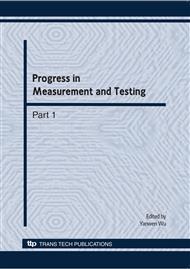p.799
p.805
p.811
p.817
p.823
p.828
p.834
p.838
p.844
Field Measurement of Wind Characteristics and Numerical Simulation at the Site Nearby Western Gap of Valley Areas
Abstract:
Few site measurements were carried out in inner-China area, partly due to researcher conceiving that the wind in inner-China area is not as strong as that in coastal area. Recent serious damages caused by local gales in middle reaches of Yellow River, far away from sea, were observed. In order to guarantee the safety of the structure, the wind load acting on the structure must be studied. But in the existing anti-wind specification the parameters of wind characteristics on complicated mountain, gorge and mountain pass terrain have no explicit stipulation. So it is obviously significant to study the wind characteristics on complicated terrain. It’s the first time to put the wind field observation of special topography on the upper and middle yellow river into practice. Field measurement tower was conducted at the site. Five 2-d anemometers and a 3-d ultrasonic anemometer were installed on the 65-meter-high tower from the 10 meters to 60meters high above ground, and two 30-meter-high towers erected on the bank of the river. Based on the method of data statistical analysis, a data processing system of wind speed observation V1.0 based on Borland C++ Builder is developed, which can rapidly and automatically process massive data. The specific wind space distribution and regular pattern around the western gap of valley areas are firstly gained. Wind field of terrain liking bell where the river flows from canyon to the open field have been simulated by CFD. The result of analysis testifies the correctness and efficiency of the numerical method. It would be provided with great theoretical significance and practical engineering value passes through the foregoing study.
Info:
Periodical:
Pages:
823-827
Citation:
Online since:
May 2010
Price:
Сopyright:
© 2010 Trans Tech Publications Ltd. All Rights Reserved
Share:
Citation:


